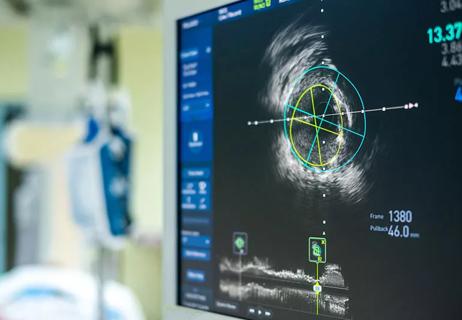Wall squats and calf stretches are among the exercises that can help ease knee pain

You worked up a sweat playing basketball, and now your knees are screaming in pain. Or maybe your knees are in agony just from sitting all day in front of your computer.
Advertisement
Cleveland Clinic is a non-profit academic medical center. Advertising on our site helps support our mission. We do not endorse non-Cleveland Clinic products or services. Policy
If one or both of your knees ache after too much sitting, running, jumping or squatting, you may have patellofemoral pain (PFPS). This pain in the kneecap area (patella) typically affects teens and young adults who run or play jumping sports like basketball and volleyball.
You might be more familiar with the terms “runner’s knee” or “jumper’s knee” to describe this condition. But anyone can develop patellofemoral pain, says rehabilitation and sports therapy expert Gary Calabrese, PT, DPT.
“As many as 1 in 4 Americans have knee pain,” says Dr. Calabrese. “And at least a quarter of knee problems occur where the kneecap and leg bones meet.”
Other conditions like knee osteoarthritis and patellar tendonitis also can cause knee pain. That’s why it’s important to see a healthcare provider to figure out the cause and start the right treatment plan.
Yes, exercise is one of the main treatments for PFPS. Dr. Calabrese says many factors contribute to patellofemoral pain, including:
You can ease PFPS by doing strengthening and stretching exercises. “Warm up your muscles first with five to seven minutes of light activity like stationary cycling or walking,” he advises.
Advertisement
Your quadriceps muscles and hip flexors are the two largest muscle groups controlling knee movement. Dr. Calabrese explains that your quads help you straighten and bend your knees when you:
“And the iliotibial (IT) band runs from your hip to below your kneecap and supports your knee joint,” he explains. “Optimizing hip musculature is critical to reinforce the IT band’s ability to ease stress on your knees.”
This exercise strengthens your gluteus medius muscle on the sides of each hip. These muscles stabilize your hips and knees.
Master the clamshell:
Wall squats engage and strengthen your quadriceps, hamstrings and glutes.
Master the wall squat:
Tight hip and leg muscles can contribute to knee pain. Dr. Calabrese recommends gently stretching leg muscles — from your hips to calves — daily. You should stretch before cooling down at the end of a workout, too. “Your cooldown can be the same exercise you did for the warmup,” he says.
To prevent hip flexor and quad tightness that contributes to knee pain, make this stretch a routine part of your day.
Master the hip flexor and quad stretch:
This exercise actively stretches your hamstrings, the thigh muscles that help bend your knees. “This is an excellent lower body strengthening exercise. It actively stretches muscles while promoting stability and balance,” says Dr. Calabrese.
Master the single-leg Romanian deadlift:
Advertisement
This exercise stretches the calf muscles in the backs of your lower legs that extend from below your knee to your ankle. This group of muscles propels you when you walk, run or jump. They’re also the reason you can flex and lock your knees and stand up straight. Tight calf muscles can pull on knee ligaments, causing pain.
Master calf stretches on stairs:
Modifications:
You can still maintain your cardiovascular fitness while recovering from PFPS. Dr. Calabrese recommends these joint-friendly aerobic activities:
Advertisement
Temporarily avoid activities that put a lot of force on your knees, such as:
Take anti-inflammatory medications and apply ice to your injured knee for 20 minutes after you exercise to ease inflammation and pain. Most people who perform exercises for patellofemoral pain and temporarily modify physical activity see an improvement in three to five weeks.
“But if you continue to push yourself and don’t take time to heal, recovery can take 12 weeks or longer,” cautions Dr. Calabrese.
He recommends seeing a healthcare provider when knee pain persists for more than 24 hours.
Advertisement
Learn more about our editorial process.
Advertisement

The simple and inexpensive band is a proven way to ease your knee pain

Most recommended precautions center around minimizing bruising or swelling

Even one drink can have an impact on your cognitive function leading to slurred speech, blurred vision and impaired memory

Understand who may (and may not) benefit

Lorem ipsum dolor sit amet. Et odio Quis vel ipsam omnis eum alias deleniti et placeat impedit non voluptas galisum hic autem enim et cupiditate aliquid. Est beatae quidem non facilis autem ut commodi nisi aut tempore rerum et dolores voluptatem cum enim optio id sapiente quasi. Ad laboriosam officiis 33 cupiditate sequi ea voluptatum consectetur qui necessitatibus voluptate et quasi doloremque et facere explicabo quo explicabo officia

Seeking help through therapy can be an important step in improving your quality of life when you have UC

Type 2 diabetes isn’t inevitable with these dietary changes

Applying a hot or cold compress can help with pain